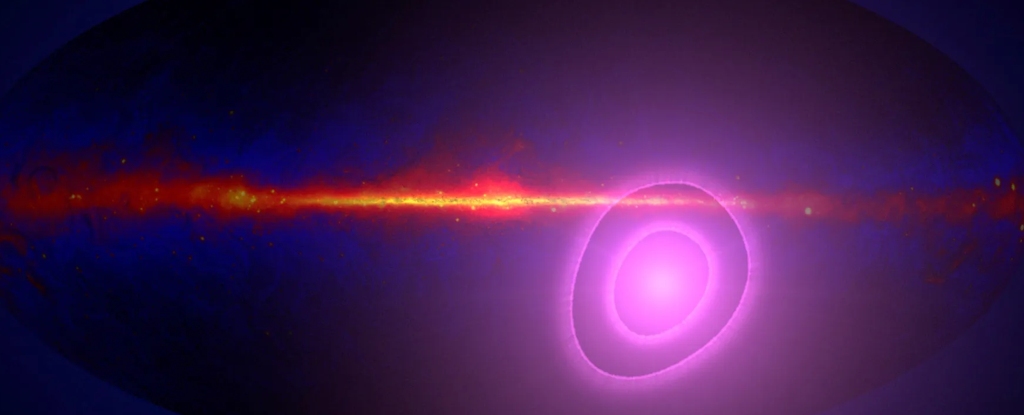NASA astronomers have discovered an unexpected “signal” coming from outside our galaxy, which they can’t explain.
The scientists were analyzing 13 years of data from the Fermi Gamma-ray Space Telescope when they noticed the mysterious signal.
It was “an unexpected and as yet unexplained feature outside of our galaxy,” wrote Francis Reddy of NASA’s Goddard Space Flight Center.
The powerful telescope can detect gamma rays, which are huge bursts of energetic light thousands to hundreds of billions of times as great as our eyes can see. They are often created when stars explode or a nuclear blast occurs. They stumbled on the alternative signal while looking for something else entirely.
“It is a completely serendipitous discovery,” said Alexander Kashlinsky, a cosmologist at the University of Maryland and NASA’s Goddard Space Flight Center, while presenting the findings to the American Astronomical Society.
“We found a much stronger signal, and in a different part of the sky than the one we were looking for.”
They had been searching for one of the oldest gamma-ray features for creating the first atoms — known as the cosmic microwave background or CMB.
The CMB has a dipole structure, where one end is hotter and busier than the other. Astronomers generally think our solar system’s motion creates the structure.
Instead, the researchers detected a signal coming from a similar direction and with a nearly identical magnitude as another unexplained feature, which had some of the most energetic cosmic particles they had ever detected.
“We found a gamma-ray dipole, but its peak is located in the southern sky, far from the CMB’s, and its magnitude is 10 times greater than what we would expect from our motion,” said Chris Shrader, an astrophysicist at Goddard.
This week, a paper describing the findings has been published in The Astrophysical Journal Letters.
They think the discovery could be linked to a cosmic gamma-ray feature observed by the Pierre Auger Observatory in Argentina in 2017.
The astronomers believe the two phenomena could originate from a single unidentified source, given their similar structure.
They hope to locate the mysterious source or develop alternative explanations for both features.
NASA’s unexpected discovery could help astronomers confirm or challenge ideas about how the dipole structure is created.
“A disagreement with the size and direction of the CMB dipole could provide us with a glimpse into physical processes operating in the very early universe, potentially back to when it was less than a trillionth of a second old,” said Fernando Atrio-Barandela, coauthor of the research paper.
NASA did not immediately reply to a request for comment from BI.
This article was originally published by Business Insider.
More from Business Insider:





